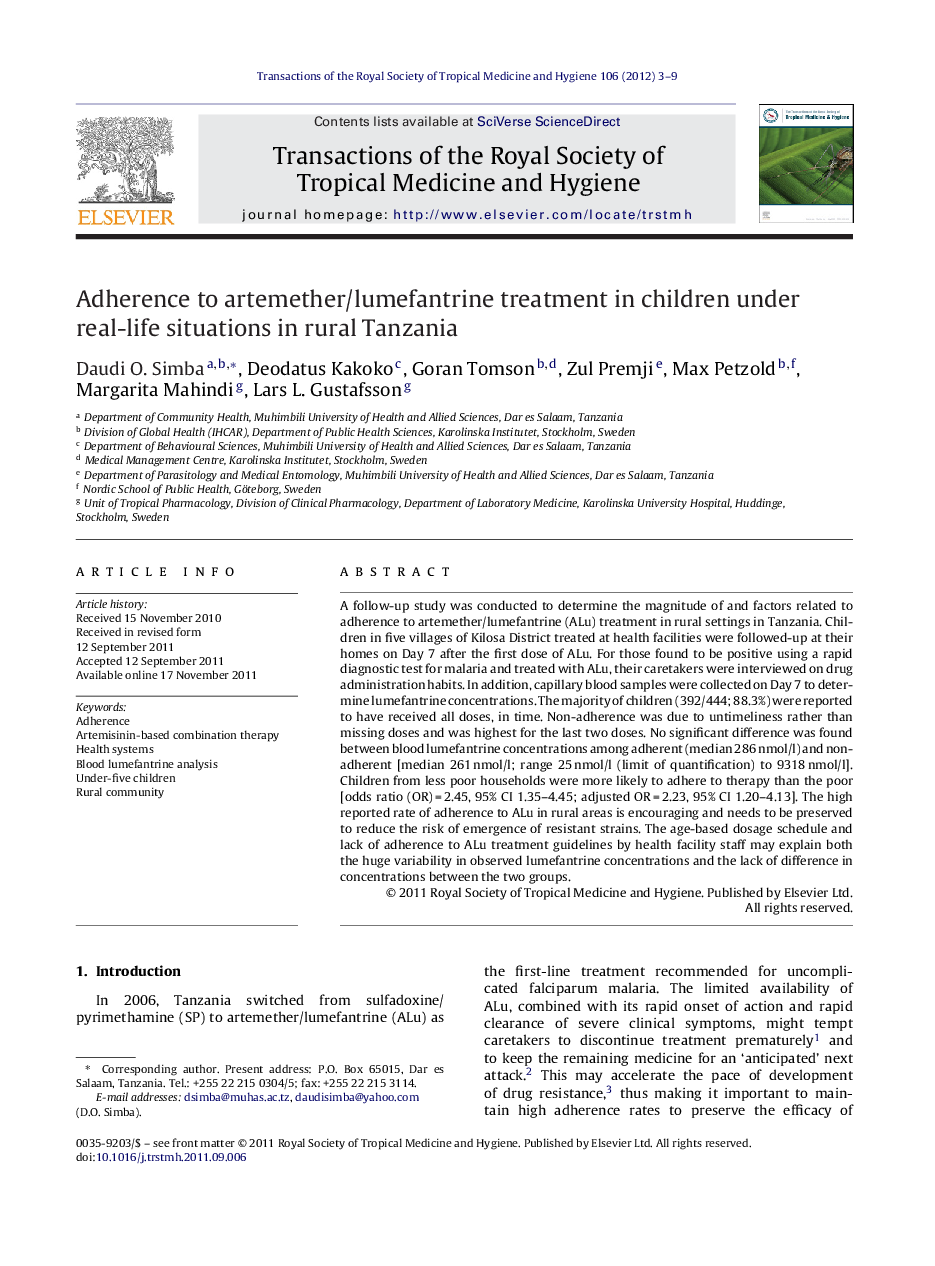| Article ID | Journal | Published Year | Pages | File Type |
|---|---|---|---|---|
| 3420354 | Transactions of the Royal Society of Tropical Medicine and Hygiene | 2012 | 7 Pages |
Abstract
A follow-up study was conducted to determine the magnitude of and factors related to adherence to artemether/lumefantrine (ALu) treatment in rural settings in Tanzania. Children in five villages of Kilosa District treated at health facilities were followed-up at their homes on Day 7 after the first dose of ALu. For those found to be positive using a rapid diagnostic test for malaria and treated with ALu, their caretakers were interviewed on drug administration habits. In addition, capillary blood samples were collected on Day 7 to determine lumefantrine concentrations. The majority of children (392/444; 88.3%) were reported to have received all doses, in time. Non-adherence was due to untimeliness rather than missing doses and was highest for the last two doses. No significant difference was found between blood lumefantrine concentrations among adherent (median 286Â nmol/l) and non-adherent [median 261Â nmol/l; range 25Â nmol/l (limit of quantification) to 9318Â nmol/l]. Children from less poor households were more likely to adhere to therapy than the poor [odds ratio (OR)Â =Â 2.45, 95% CI 1.35-4.45; adjusted ORÂ =Â 2.23, 95% CI 1.20-4.13]. The high reported rate of adherence to ALu in rural areas is encouraging and needs to be preserved to reduce the risk of emergence of resistant strains. The age-based dosage schedule and lack of adherence to ALu treatment guidelines by health facility staff may explain both the huge variability in observed lumefantrine concentrations and the lack of difference in concentrations between the two groups.
Keywords
Related Topics
Life Sciences
Immunology and Microbiology
Applied Microbiology and Biotechnology
Authors
Daudi O. Simba, Deodatus Kakoko, Goran Tomson, Zul Premji, Max Petzold, Margarita Mahindi, Lars L. Gustafsson,
